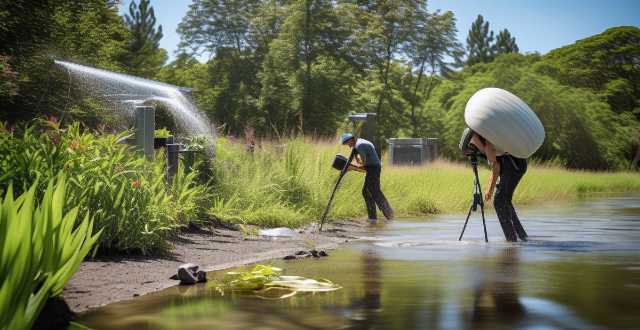Ecological design addresses water management and consumption issues through strategies such as rainwater harvesting, water recycling, using native plants in landscaping, installing efficient water fixtures, permeable paving, smart water management systems, and promoting education on water conservation.

Ecological Design: Addressing Water Management and Consumption Issues
Ecological design is a holistic approach to architecture and urban planning that aims to minimize the negative impact on the environment while maximizing positive outcomes for both humans and nature. When it comes to water management and consumption, ecological design employs various strategies to address issues related to these critical resources. Here are some key ways in which ecological design addresses water management and consumption:
Rainwater Harvesting
- Harvesting System: Installing rainwater harvesting systems allows buildings to collect and store rainwater for later use. This reduces the demand on municipal water supplies and helps recharge groundwater reserves.
- Rooftop Gardens: Green roofs can help retain rainwater, reducing runoff and improving water quality through filtration by plants.
Water Recycling and Reuse
- Greywater Systems: Greywater, or wastewater from sinks, showers, washing machines, etc., can be treated and recycled for non-potable uses such as toilet flushing, irrigation, and cleaning.
- Closed-loop Systems: Some buildings incorporate closed-loop water systems where wastewater is treated and purified for reuse within the building, significantly reducing freshwater demand.
Landscaping with Native Plants
- Drought-Tolerant Landscaping: Using native and drought-resistant plants reduces the need for irrigation, conserving water resources.
- Soil Moisture Management: Proper soil management practices, like using mulch and compost, help retain moisture in the soil, reducing the need for additional watering.
Efficient Water Fixtures and Appliances
- Low-Flow Fixtures: Installing low-flow showerheads, faucets, and toilets reduces water consumption without sacrificing performance.
- Water-Efficient Appliances: Efficient dishwashers and washing machines use less water per cycle than older models.
Permeable Paving and Infrastructure
- Permeable Pavers: Permeable paving materials allow water to pass through them, replenishing groundwater and reducing stormwater runoff.
- Rain Gardens: These gardens capture and absorb runoff from hard surfaces like driveways and sidewalks, filtering pollutants before water enters the ground.
Smart Water Management Systems
- Sensor Technology: Sensors can monitor water usage in real-time, detect leaks early, and automate irrigation based on weather conditions and soil moisture levels.
- Integrated Water Management: Integrating all water sources (rainwater, recycled greywater, and municipal supply) into a single system optimized for efficiency ensures that each source is used appropriately.
Education and Awareness
- Water Conservation Education: Including information about water conservation in community outreach programs raises awareness about the importance of water stewardship.
- Feedback Mechanisms: Providing residents with feedback on their water usage through smart metering encourages more conscious water consumption habits.
In conclusion, ecological design tackles water management and consumption issues by incorporating innovative technologies, sustainable materials, and nature-inspired solutions into building design and urban planning. By doing so, it promotes water conservation, reduces strain on local water resources, and contributes to a more resilient and sustainable future for our communities.